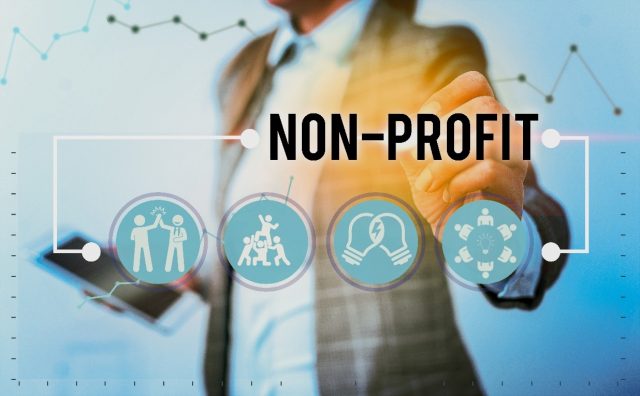As someone with ample experience helping non-profits launch and set themselves up for sustained success, Robert Kusel greatly admires nonprofit organizations. Launching and sustaining a non-profit organization is a noble and ambitious endeavor. It requires a unique blend of passion, vision, strategic planning, and persistent effort. In this comprehensive article from Robert Kusel, we’ll explore the key steps and strategies to launch a non-profit organization and ensure its long-term sustainability.
- Define Your Mission and Vision
Starting with a Strong Foundation: The first step in launching a non-profit is to define the mission and vision clearly. This involves identifying the specific issue or cause the organization wants to address and articulating what it hopes to achieve. A clear mission and vision will guide all future decisions and strategies.
- Conduct Thorough Research
Understanding the Landscape: Before diving in, it’s crucial to research the sector an organization will be entering. Robert Kusel encourages those launching a nonprofit to understand the needs of the community they aim to serve, identify existing organizations working in the same space, and assess the gaps a non-profit can fill. This will help position the organization effectively.
- Legal Formation and Compliance
Setting Up Legally: Robert Kusel explains that forming a non-profit involves legal processes, including registering the organization, obtaining tax-exempt status, and understanding the regulations that govern non-profits. This step is essential to ensure an organization operates within the legal framework.
- Develop a Strategic Plan
Mapping the Road Ahead: A strategic plan outlines an organization’s goals and the steps to achieve them. This plan should include organizational objectives, strategies for fundraising, marketing, program development, and metrics for measuring success. A well-thought-out plan is critical for long-term sustainability.
- Build a Strong Team
Finding the Right People: The team is the greatest asset of any nonprofit, notes Robert Kusel. It is vital to recruit individuals who are not only skilled but also share a passion for the cause. This includes staff, volunteers, and board members. A dedicated and talented team will be instrumental in driving an organization forward.
- Fundraising and Financial Management
Securing and Managing Funds: Fundraising is the lifeblood of any non-profit. Diversify funding sources through grants, donations, fundraising events, and partnerships. Equally important is prudent financial management. Develop a budget, monitor expenses, and ensure transparency in financial reporting.
- Develop Effective Programs and Services
Making a Real Impact: The programs and services a nonprofit offer should directly address the needs of the target community, according to Robert Kusel. An organization should identify programs based on research and feedback, and continually assess their effectiveness and impact.
- Marketing and Community Engagement
Spreading the Word: Effective marketing is crucial for raising awareness about any cause. Robert Kusel encourages nonprofits to leverage various platforms – from social media to community events – to communicate one’s message. Engaging with the community and stakeholders builds support and credibility.
- Establish Partnerships
Collaborating for Greater Impact: Partnerships with other organizations, businesses, and government agencies can amplify the impact of any nonprofit. These collaborations can provide additional resources, expertise, and networks beneficial to the cause, notes Robert Kusel.
- Measure Impact and Adapt
Learning and Growing: Nonprofits should regularly evaluate the impact of its programs. They should collect data, solicit feedback, and analyze results. Nonprofits should be willing to adapt and make changes based on what they learn. This continuous improvement process is vital for long-term success, notes Robert Kusel.
- Focus on Sustainability
Thinking Long-Term: Planning for the long-term sustainability of the organization from the outset is crucial. This means building a strong donor base, investing in staff development, and creating scalable and efficient programs.
- Nurture Donor Relationships
Building Lasting Support: Cultivating strong relationships with donors is key. Keeping them informed about the work and the difference their support makes is crucial for retaining and growing the donor base, notes Robert Kusel
- Leverage Technology
Embracing Digital Tools: Utilizing technology to streamline operations, enhance fundraising efforts, and increase reach is significant. From donor management software to social media platforms, technology can significantly boost efficiency and impact.
- Stay True to the Mission
Remaining Mission-Focused: Amidst the many demands of running a non-profit, it’s crucial to stay focused on the mission. Regular revisiting of the mission and vision to ensure all efforts align with core objectives is important.
- Foster a Culture of Learning and Innovation
Encouraging Creativity: Encouraging a culture where new ideas and innovation are welcomed is essential. Staying open to new approaches and solutions and fostering an environment where the team feels empowered to bring forward innovative ideas is vital.
Launching and sustaining a non-profit is a journey filled with challenges, learning, and fulfillment. By focusing on these key areas, any startup can build a strong, impactful, and sustainable organization that makes a lasting difference in the world. Remember, Robert Kusel believes the path of a non-profit is not just about the destination but also about the impact it creates along the way.









